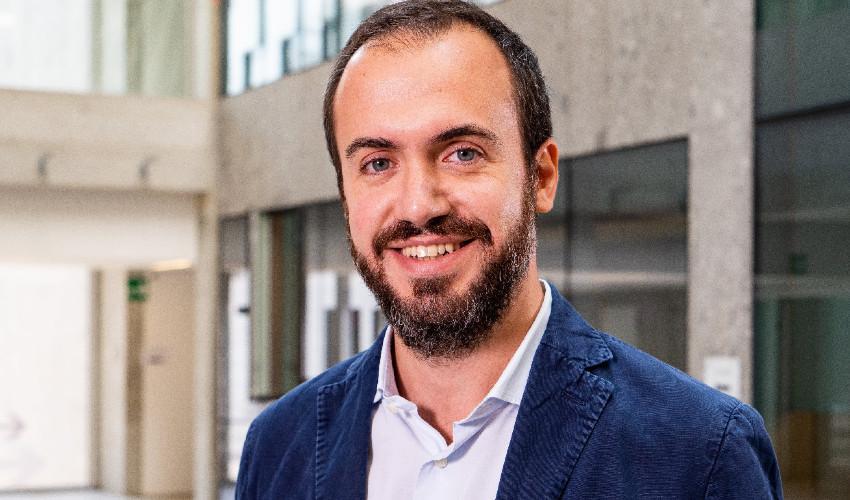
Tracking Wealth Inequality Across History
MATTIA FOCHESATO STUDIES HOW TECHNOLOGIES AND INSTITUTIONS AFFECT INEQUALITY IN THE VERY LONG RUN. HE SPANS FROM LATE NEOLITHIC, IN COLLABORATION WITH ARCHAEOLOGISTS, ANTHROPOLOGISTS AND ECONOMISTS, UNTIL THE MIDDLE AGES, EARLY MODERN TIMESWith a group of archaeologists, anthropologists, and economists from various US and UK institutions, Mattia Fochesato, Assistant Professor in Economic History in the Department of Social and Political Sciences, has been studying the history of wealth inequality and their determinants. As he always had an interest in archaeology, he was naturally “attracted by this group of researchers”. “When I was once visiting Samuel Bowles at the Santa Fe Institute, I met the archaeologist Amy Bogaard and there was an intellectual attraction between the three of us. She had a lot of good data and questions and Sam and I had ideas on how to make this data comparable, meaningful, and to account for issues of sample bias, gaps, etc…”
Their collaboration led to the publication of a series of papers on the impact of the introduction of agriculture on inequality in the late-Neolithic. In a 2017 Nature paper, they compared inequality levels between 63 archaeological sites in Eurasia, North America and Mesoamerica. Using house sizes as a proxy for wealth, they show that Eurasia experienced an increase in inequality in the post-Neolithic while North America and Mesoamerica did not. One explanation for it is that Eurasia had greater availability of large mammals, which they domesticated and used to develop a more profitable agricultural system. As it is likely that only richer households were able to own and maintain plow animals, inequality rose.
Later on however, in two 2019 papers, they highlighted that the introduction of agriculture is not necessarily conducive to inequality. It depends on the type of agricultural system adopted, i.e. whether it is labour-intensive or land-intensive. Land-intensive agriculture developed with the introduction of the plow, which enabled to produce more crop with less labour. “When animals started to substitute for human labor, what becomes important in the production is land rather than labor”, he says, “and land can be accumulated”. Hence the shift from labor to plow enabled land-owners to increase the value of their assets as land became the scarce factor of production.
In a second research stream, Prof. Fochesato studies wealth inequality in the late Middle Ages with a focus on demographic and innovation shocks. In one project, he looks at the effect of the 14th and 15th century plague episodes on the textile labor market in Florence. He finds that the epidemics induced a labor supply shock that increased the bargaining power of textile workers. As a result, entrepreneurs started to adopt labor-saving technologies to reduce their costs.
Another project uses data on family wealth and the Florentine political system of the 15th century to show how the Medici family captured power and established a process of wealth accumulation among the rich families of the time.
When asked to draw a parallel between his research and the current state of inequality, Prof. Fochesato refers to an article that compared the introduction of domesticated animals to robots. “Whenever you have a technological innovation that is substituting labor with machines then you have a potential for inequality, and this might apply also to our society. The owners of those assets become the ones that can accumulate wealth”.
In the next steps, he wants to see how institutions, such as taxation systems, labor and slavery laws as well as redistribution systems, also played a role in the development of wealth inequality.
Find out more
Kohler. T., Smith, M., Bogaard, A., Feinman, G.,Peterson, C., Betzenhauser, A., Pailes, M., Elizabeth C. Stone, E., Prentiss, M., Dennehy, T., Ellyson, L., Nicholas, L., Ronald K. Faulseit, R., Styring, A., Whitlam, J., Fochesato, M., Foor, F. and Bowles, S., 2017, “Greater Post-Neolithic Wealth Disparities in Eurasia than Americas”, Nature, 551, pp. 619–622.
Bogaard, A., Fochesato, M. and S. Bowles, S., 2019, “The farming-inequality nexus: new methods and evidence from western Eurasia”, Antiquity, 93 (371), pp. 1129-1143.
Fochesato, M., Bogaard, A. and S. Bowles, S., 2019, “Comparing ancient inequalities: the challenge of comparability, bias, and precision”, Antiquity, 93 (370), pp. 853-869.
Belloc, M., Drago, F., Fochesato, M. and R. Galbiati, R., 2019, “Les Liaisons Dangereuses: Politics and Wealth in the Florentine Republic”, working paper.
Fochesato, M., 2019 “Black Death and labor legislation in late medieval Europe: the causes of a long-run economic divide”, working paper.
by Colombe Ladreit
